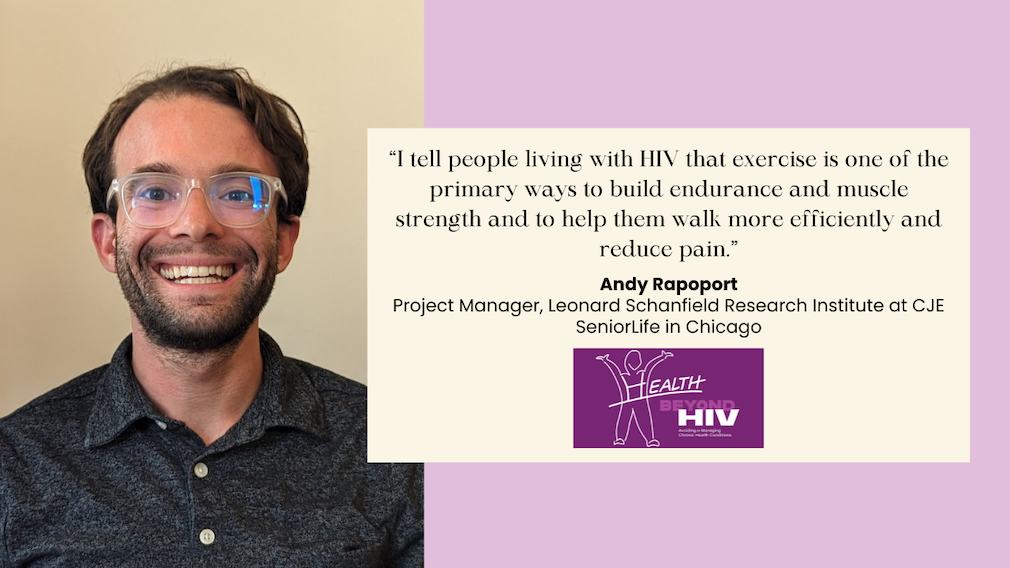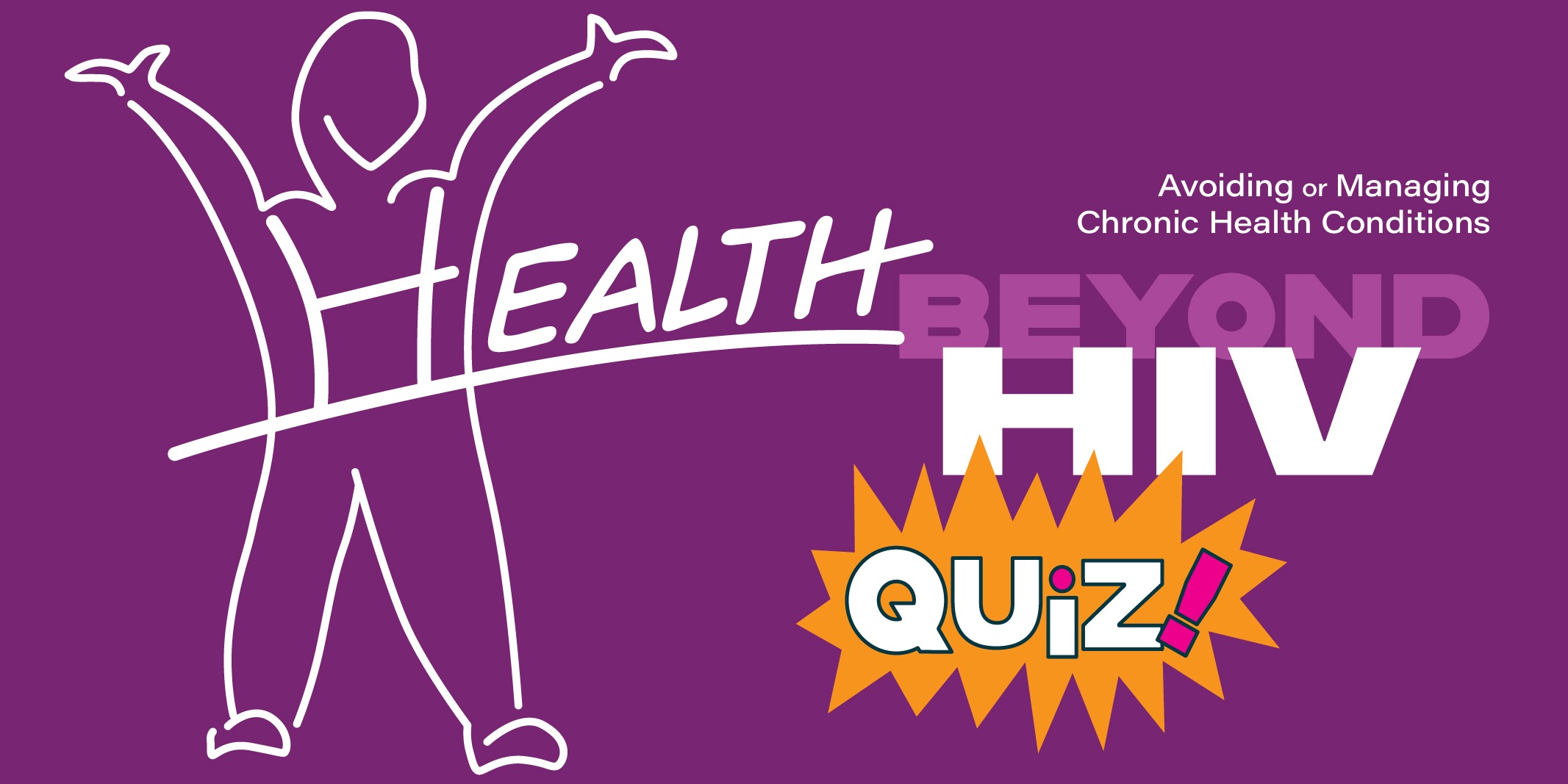Mobility issues, fatigue and chronic pain are symptoms experienced by many people living with HIV. Regular physical activity helps to relieve these symptoms, according to a public health professional who has experience working with these individuals.
“I tell people living with HIV that exercise is one of the primary ways to build endurance and muscle strength and to help them walk more efficiently and reduce pain,” said Andy Rapoport, a project manager at the Leonard Schanfield Research Institute at CJE SeniorLife in Chicago. He oversees various projects, including free online exercise classes designed for people of all ages living with HIV.
Exercise may also help to avoid or manage chronic health conditions, or co-morbidities, including cardiovascular disease, diabetes, cancer and kidney disease, for which people living with HIV are at elevated risk.

Consult with your health professional
A person living with HIV can consult their healthcare provider for guidance on which activities suit them and their health and medication routines. This consultation includes having a medication management check-in to confirm that the individual is taking antiretroviral therapy, or ART, precisely as prescribed to suppress HIV to undetectable levels in the blood.
Follow a routine
For people living with HIV, a regular exercise routine is critical for their physical and mental health and quality of life. A routine with aerobic exercise, strength training, and balance activities offers variation in movement that helps the entire body.
- Aerobic exercises such as walking, swimming or cycling help to improve cardiovascular health, boost energy levels, and manage stress. Aim for at least 30 minutes of exercise five days a week, but any physical activity is better than none, so do as much as you can.
- Strength training helps build and maintain body muscles, essential especially as people age with HIV. Lifting weights or doing any weight-bearing exercise twice a week can help prevent bone loss and increase muscle mass.
- Balance exercises that are challenging enough to make you feel a bit unsteady help to reduce fall risk.
Focus on enjoyment
Exercise is a personal activity, so be kind. “It’s so important to be kind to yourself and find an exercise routine you enjoy,” Rapoport explained. “Whether it’s yoga, a stretching class, or walking, start with something you genuinely like and find joy in because it’s easier to stay with it.”
Build intensity gradually
A gradual increase in intensity means to sit less and stand more. When watching television, stand up and stretch during commercials. Walk around the house or apartment during phone conversations.
“I tell people not to force a higher intensity in their exercise routine but feel empowered to try it and see the benefits, and to increase intensity over time,” said Rapoport.
Health beyond HIV
Rapoport believes in a holistic approach to exercise and life beyond HIV, in which eating healthy foods and exercising regularly align.
“Long-term survivors of HIV have told me their support and care networks helped them live and age successfully with the disease. I tell them exercise is the best medicine to help manage HIV and other possible chronic conditions because it can help improve overall well-being and quality of life with a routine they enjoy.”
Learn more about the free online exercise classes at CJE SeniorLife. Contact Rapoport with questions at andy.rapoport@cje.net or 1-773-508-1055.







